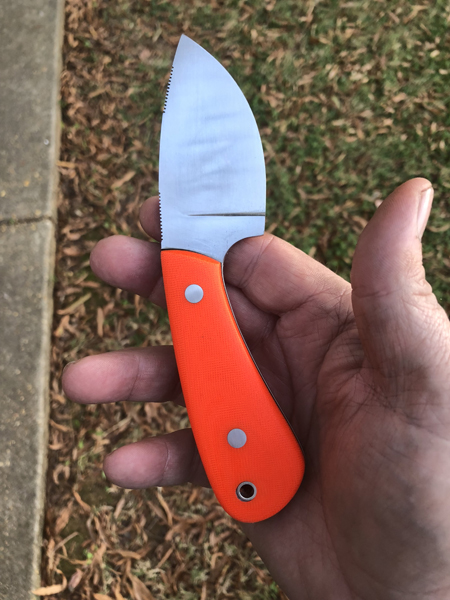Anyone here make their own micarta type material? I have played with it for a bit. Layered material stacked up works well with my molds and press I have. I am doing some camo patterns where I chop up the fabric into random shapes, soak it in the epoxy and then put it into a mold, press it and let cure. The mold looks like a flat bottom V and I put pieces of steel across the 2 open ends and a piece of steel for the press to push down on. The epoxy/fabric mix is in Ziplock bags to control the overflow and so the epoxy doesn't harden on the mold or the piece that pushed down into the mold. I find I get bubbles or areas with just epoxy and no fabric. I get a good bit of squeeze out of epoxy ( the top plate has room around it for the epoxy to squeeze outand have tried 2 ton and 6 presses. The 20 ton press I tried forced almost all of the epoxy out of the fabric...lol. Would it be better to get a tighter fitting/more contained mold so the epoxy can't squeeze out as much? Trying to get the blocks to be more solid like G Carta blocks are.
For cutting down a block, I have been using a bandsaw, but it's tough material and my bandsaw sucks and doesn't cut very straight. Would a table saw work better and what type/tooth size blade would work best? Not sure if a 80T Laminate blade would be better or one with coarser teeth?
For cutting down a block, I have been using a bandsaw, but it's tough material and my bandsaw sucks and doesn't cut very straight. Would a table saw work better and what type/tooth size blade would work best? Not sure if a 80T Laminate blade would be better or one with coarser teeth?




